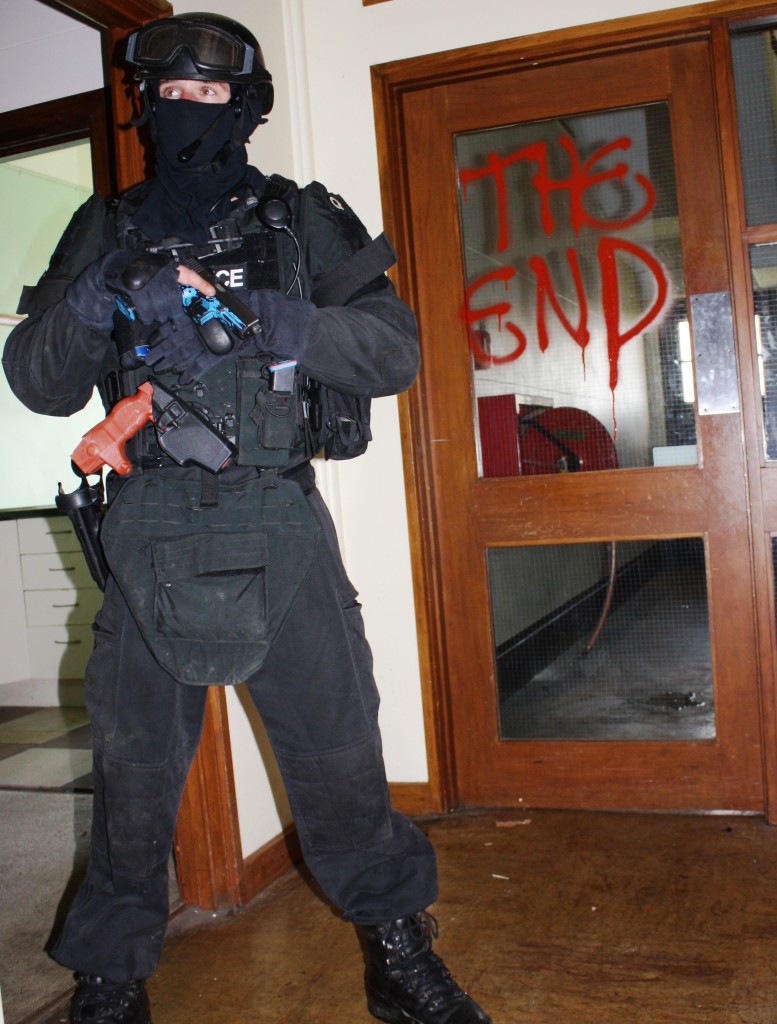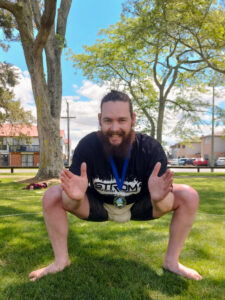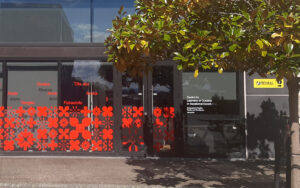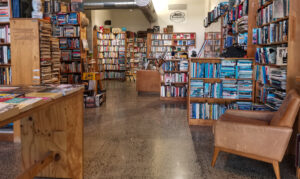A morning in (simulated) Hell
Journalism students were invited to take part in an AOS exercise on September 30. Christopher Reive reports.

When a gun is being held in your face, it’s hard to say what your first thought will be. For me, it was ‘alright, smartass – don’t say or do anything stupid.’
I hear the Armed Offenders Squad Sergeant through earplugs. “Do as you’re told and you won’t be hurt,†he says. And, “Officers will act to your reactions accordingly.â€
He demonstrates the noise we should expect when shots go off and the seven other hostages and I nod. Only blanks will be fired today.
The one noticeable difference between these guns and those used in the field is blue paint.
For the next two hours, we will be walking in a nightmare – or, as the AOS calls it, a training exercise.
The scenario is fairly straightforward – we are in building that has been taken over by two armed men. We are damsels in distress. We need saving.
No one can give me an exact answer as to how long this boarding hostel has been out of action, but anywhere in the two-to-three years bracket seems to be the agreed upon estimate. There is spray paint on the doors, walls and windows. Red, black, and white. Some of it looks fresh. Swastikas, vague words like ‘THE END’ and ‘POWER’ – as well as the not-so-vague ‘Rape Dungeon’ – and extremely stylised depictions of penises.
We are led down a wide body of shallow water – they say it was once a corridor – and told to hide. The drill is about to begin.
I head left of the watery passage and down a hallway lined with either mud or carpet. It’s so dark and squelchy that it could quite possibly be either. The unmistakeable smell of must fills my nostrils.
Alright, Chris – small, silent breaths.
This is extreme hide-and-seek. I peer into seven rooms looking for the perfect niche. Where won’t an offender look?
It’s slim pickings – four of these rooms are small areas with no closet space for someone standing at 190cm – so I am quite content when I poke my head through a doorway at the end on the hall. ‘Cleaning Room’ is marked on the door in black marker.
The door  shuts all the way and there’s a space in the corner behind a cabinet that I can squeeze myself into. I open the cabinet door to hide what remains visible of my body. I tell myself I’m a hide-and-seek pro as invisible soldiers bark commands to each other in the distance.
I sit nestled in the corner with my knees against my chest. A slater crawls along my shoes. I hear footsteps in the hallway.
Everything falls silent; uneasy for a brief moment.
“Help! Help me! He’s in here!†The shrieks of a female hostage ring throughout the building. Combat boots clunking down the hallway grow louder and louder. The muffled yells return.
A single shot rings out. I don’t know where it’s come from, but it is answered by at least six more.
I hear more distorted call signs – damn these earplugs, how am I supposed to hear what’s going on? – I take them out in time to hear boots thump away. The silence returns, and so does the slater.
I put years of hide-and-seek experience into use and wait, wondering what the smaller details of the scenario we’re running could be. I start to pitch to myself.
“I think I’ll play Gregory Summers – a driven investigator caught up in the very situation he’s been keeping tabs on,†I say aloud. No one’s going to read that story, but hey, who’s listening?
I dive into constructing a back-story for Gregory Summers. Born in Hamilton in 1992, he moved to Auckland when he was five years old, but soul-crushingly high house prices have now forced him to move back home.
“CLEAR TO ME.â€
The clunking floods back down the hall.
“I’VE GOT ONE HOSTAGE. FEMALE. UNINJURED.â€
“CLEAR.â€
A heavy hand clutches the handle to my safe haven from simulated death. The heavy wooden door is flung aside like a curtain. Heavy footsteps have entered the room. I lift my gaze.
“Hands on your head! Stand up and walk to me!†An AOS officer barks instructions to me through his balaclava and helmet. I submit without hesitation, though it’s quite awkward trying to slide up out of a tight space with your hands on your head.
“Keep your hands on your head and sit down,†the officer says pointing to a spot in the middle of the room with his gun.
Another awkward movement with hands on head. I flop into a position that vaguely resembles sitting.
“Are you injured?â€
“Nah, I’m sweet.â€
“Did you see anyone running down here with a gun?â€
“No I haven’t.â€
“Okay. Stand up.â€
I am walked out of the room and told to stand behind a female hostage. Was she the one who screamed before? Perhaps she was.
Two officers lead us through the mush and shards of glass that cover the ground, and we slosh our way into a safe zone. Three other hostages have already been rescued, one has been fake shot and has his head covered in ‘blood’-soaked bandages. We all exchange stories. One was forced to lie face-down while the officers checked if he had weapons, while another had been fake hand-cuffed.
We’re told we’ll be taken out of the building once the squad has cleared each zone, which takes roughly 10 more minutes.
With hands on heads, we are led back through the lake corridor in single file. The stench has risen with the sun. As we leave, I fight off the instinct to gag.
The hostages from elsewhere in the building soon follow.
The Sergeant debriefs us. He says the exercise went well. They had identified what things worked as planned, and areas in need of more work.
We’re fed chicken and chips, and given 400 mL bottles of water.




